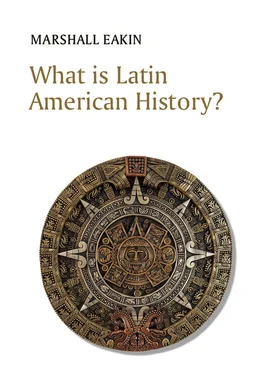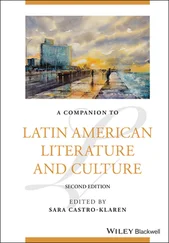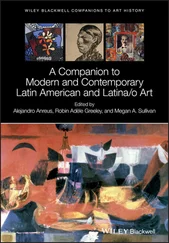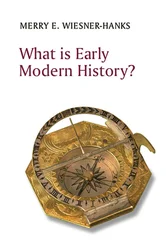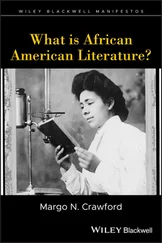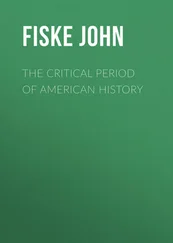Marshall Eakin - What is Latin American History?
Здесь есть возможность читать онлайн «Marshall Eakin - What is Latin American History?» — ознакомительный отрывок электронной книги совершенно бесплатно, а после прочтения отрывка купить полную версию. В некоторых случаях можно слушать аудио, скачать через торрент в формате fb2 и присутствует краткое содержание. Жанр: unrecognised, на английском языке. Описание произведения, (предисловие) а так же отзывы посетителей доступны на портале библиотеки ЛибКат.
- Название:What is Latin American History?
- Автор:
- Жанр:
- Год:неизвестен
- ISBN:нет данных
- Рейтинг книги:4 / 5. Голосов: 1
-
Избранное:Добавить в избранное
- Отзывы:
-
Ваша оценка:
- 80
- 1
- 2
- 3
- 4
- 5
What is Latin American History?: краткое содержание, описание и аннотация
Предлагаем к чтению аннотацию, описание, краткое содержание или предисловие (зависит от того, что написал сам автор книги «What is Latin American History?»). Если вы не нашли необходимую информацию о книге — напишите в комментариях, мы постараемся отыскать её.
What is Latin American History? — читать онлайн ознакомительный отрывок
Ниже представлен текст книги, разбитый по страницам. Система сохранения места последней прочитанной страницы, позволяет с удобством читать онлайн бесплатно книгу «What is Latin American History?», без необходимости каждый раз заново искать на чём Вы остановились. Поставьте закладку, и сможете в любой момент перейти на страницу, на которой закончили чтение.
Интервал:
Закладка:
As government funding and influence shaped the use and definition of Latin America in the United States, the enormous power and presence of the latter, ironically, helped spur a sense of solidarity among the peoples of the region to see themselves as Latin Americans. During the Cold War, Mexicans, Chileans, Brazilians, and the like increasingly spoke of themselves as Latin Americans ( latinoamericanos ) as a means of contrasting themselves with the imperialist power to the north. As with Anglo-Saxons in the nineteenth century, in the postwar struggle Latin Americans often referred to the citizens of the United States as North Americans ( norteamericanos ), another misnomer that should technically include Canadians and Mexicans. Although U.S. citizens like to refer to themselves in English as Americans, the term really encompasses everyone from Arctic Canada to Tierra del Fuego. Understandably, many Latin Americans refuse to use the term and resort to norteamericanos , leaving both groups with dubious terminology.
One of the first institutions in the region to apply the terminology was the Comisión Económica para América Latina [CEPAL] (Economic Commission for Latin America, or ECLA), created by the United Nations in 1948 and located in Santiago, Chile. Its principal task has been to encourage economic cooperation, especially through the gathering and analysis of data on Latin American economies. In the 1980s, it added the Caribbean to its title (becoming ECLAC and CEPALC). By their count, there are twenty Latin American nations (eighteen Spanish speaking, plus Brazil and Haiti). Over the decades other regional organizations took on the terminology, such as the Facultad Latinoamericana de Ciencias Sociales [FLACSO] (Latin American Social Sciences Faculty), created in the 1950s by UNESCO to promote the teaching and influence of the social sciences in the region. Unlike the United States or Europe, Latin American countries rarely have created strong and enduring centers for the study of Latin America or, for that matter, centers for the study of the United States.
As Latin American studies boomed in the 1960s, new professional organizations began to take shape in Europe and the United States, and they adopted the terminology, reinforcing its linguistic dominance. U.S. scholars founded the Latin American Studies Association (LASA) in 1965 along with its own journal, the Latin American Research Review . Originally an association primarily for academics in the United States, in the last two decades it has become a truly international organization of more than 12,000 members, two-thirds of them residing outside the United States. Similarly, the Society for Latin American Studies was founded in the United Kingdom in 1964 with its own journal, the Bulletin of Latin American Research . The institutional and professional associations, centers, and agencies in the United States, Europe, and Latin America had overwhelmingly adopted the terminology of “Latin America” by the 1970s.
The recent critiques of the term Latin America have roots at least back to the early twentieth century. Intellectuals in regions with indigenous or Afrodescendant majorities in the 1920s and 1930s spoke of Indo America or Afro America. In Mexico and Brazil, the largest countries in the region (and with half the population), intellectuals consciously spurned the Eurocentric visions that had dominated in the nineteenth century and began to emphasize the racially and culturally mixed heritage of Mexicans and Brazilians. They embraced the African and Native American contributions to national culture along with the European (or Latin) heritage. Despite these critiques, the majority of these intellectuals were themselves primarily of European descent, and rarely did they reject the increasingly awkward term Latin America.
The systematic critique of the terminology has taken shape over the last three decades among academics across the Americas and Europe. Much of this discussion has focused on how the terminology emerged among the Europeanized elites in the nineteenth century, together with the role of the U.S. security and defense communities in promoting it. Walter Mignolo, an Argentine cultural theorist who taught for many years at Duke University, was one of the earliest and most vocal critics, arguing that the terminology was flawed and that Latin America, in fact, did not even exist. 6The emergence of a powerful wave of identity politics across the Americas has deconstructed the notion of a Latin American identity and has also called into question national identities. Despite regular calls among a wide variety of groups across the Americas for solidarity in the face of the cultural imperialism of the United States, these groups emphasize the multiplicity of identities (especially ethnoracial ones) and de-emphasize national and Latin American identity. The result of the intense conversation about identity over the past three decades has been to leave us in a quandary. Very few would rise today to defend the adequacy of the modifier “Latin” in front of America, yet no one has put forward another label for the region that has gained traction. For the moment, we continue to use this inadequate terminology with an awareness of its limitations, but without a more acceptable name.
Further complicating the conundrum is a lack of consensus on something as seemingly simple as who we should include in the region that we cannot adequately name! A brief survey of the major English-language textbooks on the history of Latin America across the twentieth century quickly reveals the range of definitions. In the U.S., textbooks on Latin America throughout the first half of the twentieth century took a very simple political approach to defining Latin America as the twenty republics that gained their independence in the nineteenth century, from Spain (eighteen countries), Portugal (Brazil), and France (Haiti). (Panama, of course, is an oddity here, having gained its independence as a part of New Granada in the 1820s and then again in 1903 as an “independent” republic. Cuba did not leave the Spanish empire until 1898 and then experienced U.S. occupation until 1902.) From the earliest texts of the founders of the field of Latin American history (such as William Spence Robertson and Percy Alvin Martin, founders of the Hispanic American Historical Review ) to the journalist Hubert Herring’s A History of Latin America (1955, 1961, 1968), this was the standard approach. These books were nearly always diplomatic, political, and military history, with only the occasional nod toward society and culture. Even the noted journalist John Gunther, in his wide-ranging travels, did not bother to look beyond the standard twenty republics. 7
Some of the very first synthetic texts on the region focused solely on Spain in the Americas and went no farther than the colonial period. Charles Edward Chapman, in Colonial Hispanic America: A History (1933), includes Brazil, and he rejects the “incorrect term ‘Latin America’” in favor of “Hispanic America.” The major synthetic surveys in the 1940s and 1950s took as their domain the twenty independent republics. Dana G. Munro, J. Fred Rippy, Donald E. Worcester and Wendell G. Schaeffer all produced encyclopedic surveys. Munro (a former State Department diplomat) covers the colonial period in just over a hundred pages and then takes another 450 to cover the political histories of each of the twenty nations! Much like Herring, Rippy focuses mainly on politics and economics, but with the occasional section on “intellectual life.” Worcester and Schaeffer’s massive survey (at more than 900 pages) offers a very straightforward political history with little effort to frame the issues or the region. It is classic history as “one damn thing after another.” The greatest publishing success of this era is easily John A. Crow’s The Epic of Latin America , which was first published in 1946. Trained as a scholar of Spanish literature, Crow taught for decades (1937–74) at UCLA. Despite its size (nearly a thousand pages in the last edition), The Epic of Latin America has been a huge commercial success, going through four editions over fifty years (1946, 1971, 1980, 1992). 8
Читать дальшеИнтервал:
Закладка:
Похожие книги на «What is Latin American History?»
Представляем Вашему вниманию похожие книги на «What is Latin American History?» списком для выбора. Мы отобрали схожую по названию и смыслу литературу в надежде предоставить читателям больше вариантов отыскать новые, интересные, ещё непрочитанные произведения.
Обсуждение, отзывы о книге «What is Latin American History?» и просто собственные мнения читателей. Оставьте ваши комментарии, напишите, что Вы думаете о произведении, его смысле или главных героях. Укажите что конкретно понравилось, а что нет, и почему Вы так считаете.
